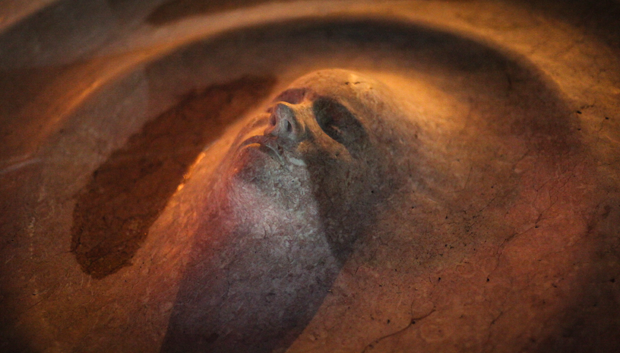8 Mar 2014 | Azerbaijan News, News
International Women’s Day is a day to remember violence against women, the education gap, the wage gap, online harassment, everyday sexism, the intersection between sexism and other -isms, and a whole host of other issues to make us realise we’ve still got a long way to go. A day to demand continued progress, and a day to pledge to work to achieve it.
But it is also a day to celebrate. To appreciate the fantastic achievements that are made every day, everywhere, by women from all walks of life. It’s a day to be grateful to the women who dedicate their lives to fighting on the front lines to protect rights vital to us all. We want to shine the spotlight on women who have stood up for freedom of expression when it’s not the easy or popular thing to do, against fierce opposition and often at great personal risk. The following eight women have done just that. We know there are many, many more. Tell us about your female free speech hero in the comments or tweet us @IndexCensorship.
Meltem Arikan — Turkey
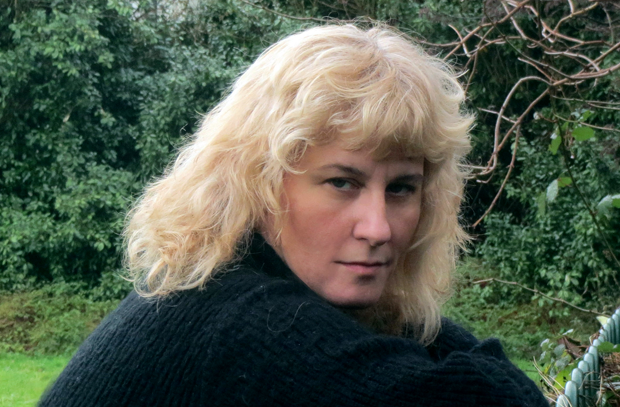
Meltem Arikan
Arikan is a writer who has long used her work to challenge patriarchal structures in society. He latest play “Mi Minor” was staged in Istanbul from December 2012 to April 2013, and told the story of a pianist who used social media to challenge the regime. Only a few months after, the Gezi Park protests broke out in Turkey. What started as an environmental demonstration quickly turned into a platform for the public to express their general dissatisfaction with the authorities — and social media played a huge role. Arikan was one of many to join in the Gezi Park movement, and has written a powerful personal account of her experiences. But a prominent name in Turkey, she was accused of being an organiser behind the protests, and faced a torrent of online abuse from government supporters. She was forced to flee, now living in exile in the UK.
I realised that we were surrounded, imprisoned in our own home and prevented from expressing ourselves freely.
Anabel Hernández — Mexico
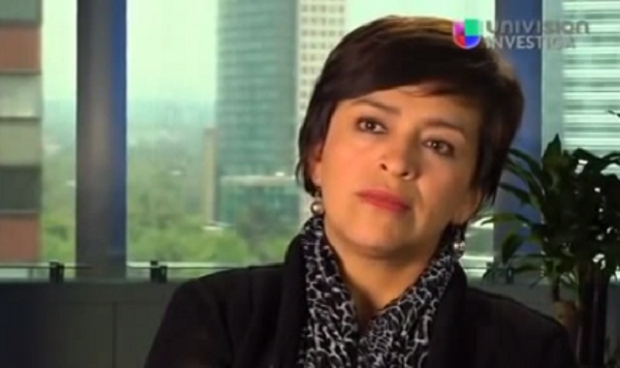
Anabel Hernández (Image: YouTube)
Hernández is a Mexican journalist known for her investigative reporting on the links between the country’s notorious drug cartels, government officials and the police. Following the publication of her book Los Señores del Narco (Narcoland), she received so many death threats that she was assigned round-the-clock protection. She can tell of opening the door to her home only to find a decapitated animal in front of her. Before Christmas, armed men arrived in her neighbourhood, disabled the security cameras and went to several houses looking for her. She was not at home, but one of her bodyguards was attacked and it was made clear that the visit — from people first identifying themselves as members of the police, then as Zetas — was because of her writing.
Many of these murders of my colleagues have been hidden away, surrounded by silence – they received a threat, and told no one; no one knew what was happening…We have to make these threats public. We have to challenge the authorities to protect our press by making every threat public – so they have no excuse.
Amira Osman — Sudan
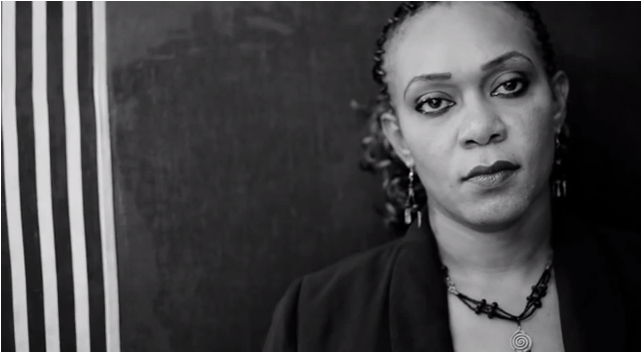
Amira Osman (Image: YouTube)
Amira Osman, a Sudanese engineer and women’s rights activist was last year arrested under the country’s draconian public order act, for refusing to pull up her headscarf. She was tried for “indecent conduct” under Article 152 of the Sudanese penal code, an offence potentially punishable by flogging. Osman used her case raise awareness around the problems of the public order law. She recorded a powerful video, calling on people to join her at the courthouse, and “put the Public Order Law on trial”. Her legal team has challenged the constitutionality of the law, and the trial as been postponed for the time being.
This case is not my own, it is a cause of all the Sudanese people who are being humiliated in their country, and their sisters, mothers, daughters, and colleagues are being flogged.
Fadiamata Walet Oumar — Mali
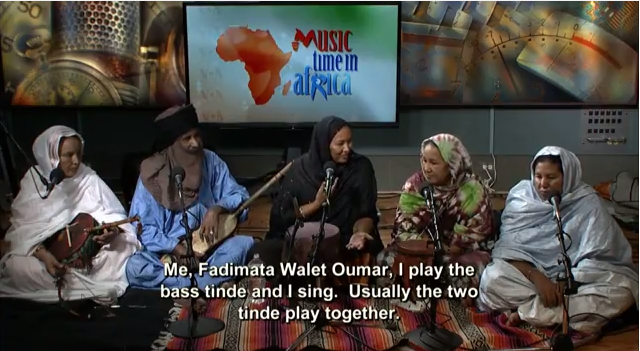
Fadiamata Walet Oumar with her band Tartit (Image: YouTube)
Fadiamata Walet Oumar is a Tuareg musician from Mali. She is the lead singer and founder of Tartit, the most famous band in the world performing traditional Tuareg music. The group work to preserve a culture threatened by the conflict and instability in northern Mali. Ansar Dine, an islamists rebel group, has imposed one of the most extreme interpretations of sharia law in the areas they control, including a music ban. Oumar believes this is because news and information is being disseminated through music. She fled to a refugee camp in Burkina Faso, where she has continued performing — taking care to hide her identity, so family in Mali would not be targeted over it. She also works with an organisation promoting women’s rights.
Music plays an important role in the life of Tuareg women. Our music gives women liberty…Freedom of expression is the most important thing in the world, and music is a part of freedom. If we don’t have freedom of expression, how can you genuinely have music?
Khadija Ismayilova — Azerbaijan
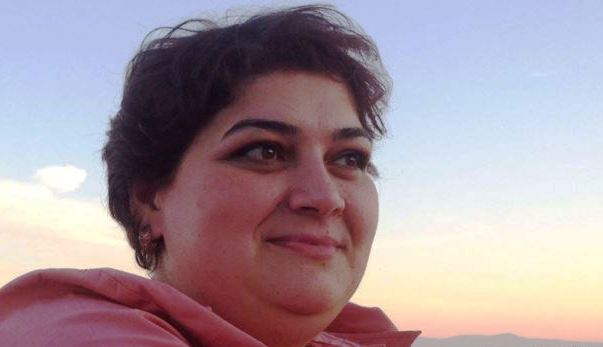
Khadija Ismayilova
Ismayilova is an award-winning Azerbaijani journalist, working with Radio Free Europe/Radio Liberty. She is know for her investigative reporting on corruption connected to the country’s president Ilham Aliyev. Azerbaijan has a notoriously poor record on human rights, including press freedom, and Ismayilova has been repeatedly targeted over her work. She was blackmailed with images of an intimate nature of her and her boyfriend, with the message to stop “behaving improperly”. This February, she was taken in for questioning by the general prosecutor several times, accused of handing over state secrets because she had met with visitors from the US Senate. In light of this, she posted a powerful message on her Facebook profile, pleading for international support in the event of he arrest.
WHEN MY CASE IS CONCERNED, if you can, please support by standing for freedom of speech and freedom of privacy in this country as loudly as possible. Otherwise, I rather prefer you not to act at all.
Jillian York — US
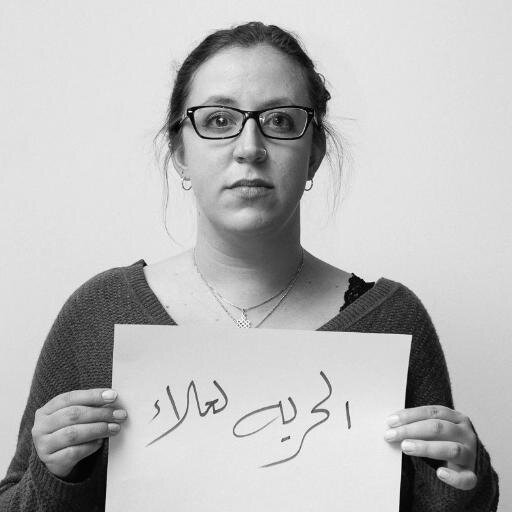
Jillian York (Image: Jillian C. York/Twitter)
Jillian York is a writer and activist, and Director of Freedom of Expression at the Electronic Frontier Foundation (EFF). She is a passionate advocate of freedom of expression in the digital age, and has spoken and written extensively on the topic. She is also a fierce critic of the mass surveillance undertaken by the NSA and other governments and government agencies. The EFF was one of the early organisers of The Day We Fight Back, a recent world-wide online campaign calling for new laws to curtail mass surveillance.
Dissent is an essential element to a free society and mass surveillance without due process — whether undertaken by the government of Bahrain, Russia, the US, or anywhere in between — threatens to stifle and smother that dissent, leaving in its wake a populace cowed by fear.
Cao Shunli — China
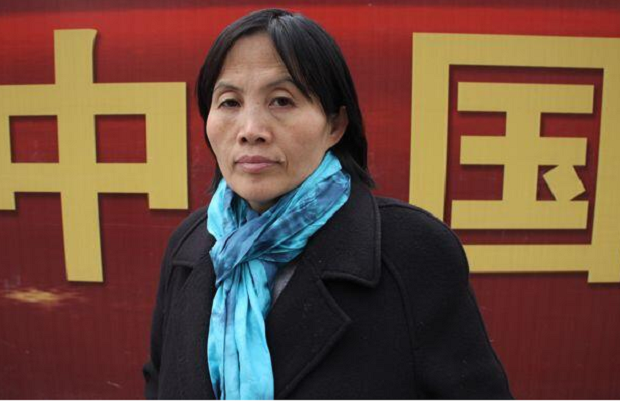
Cao Shunli (Image: Pablo M. Díez/Twitter)
Shunli is an human rights activist who has long campaigned for the right to increased citizens input into China’s Universal Periodic Review — the UN review of a country’s human rights record — and other human rights reports. Among other things, she took part in a two-month sit-in outside the Foreign Ministry. She has been targeted by authorities on a number of occasions over her activism, including being sent to a labour camp on at least two occasions. In September, she went missing after authorities stopped her from attending a human rights conference in Geneva. Only in October was she formally arrested, and charged for “picking quarrels and promoting troubles”. She has been detained ever since. The latest news is that she is seriously ill, and being denied medical treatment.
The SHRAP [State Human Rights Action Plan, released in 2012] hasn’t reached the UN standard to include vulnerable groups. The SHRAP also has avoided sensitive issue of human rights in China. It is actually to support the suppression of petitions, and to encourage corruption.
Zainab Al Khawaja — Bahrain
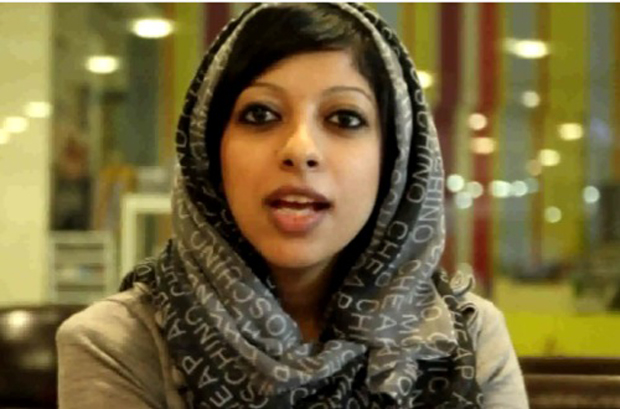
Zainab Al Khawaja
Al Khawaja is a Bahraini human rights activist, who is one of the leading figures in the Gulf kingdom’s ongoing pro-democracy movement. She has brought international attention to human rights abuses and repression by the ruling royal family, among other things, through her Twitter account. She has also taken part in a number of protests, once being shot at close range with tear gas. Al Khawaja has been detained several times over the last few years, over “crimes” like allegedly tearing up a photo of King Hamad bin Isa Al Khalifa. She had been in jail for nearly a year when she was released in February, but she still faces trials over charges like “insulting a police officer”. She is the daughter of prominent human rights defender Abdulhadi Al Khawaja, who is currently serving a life sentence.
Being a political prisoner in Bahrain, I try to find a way to fight from within the fortress of the enemy, as Mandela describes it. Not long after I was placed in a cell with fourteen people—two of whom are convicted murderers—I was handed the orange prison uniform. I knew I could not wear the uniform without having to swallow a little of my dignity. Refusing to wear the convicts’ clothes because I have not committed a crime, that was my small version of civil disobedience.
This article was posted on March 8, 2014 at indexoncensorship.org
7 Mar 2014 | Americas, Ecuador, News, Politics and Society
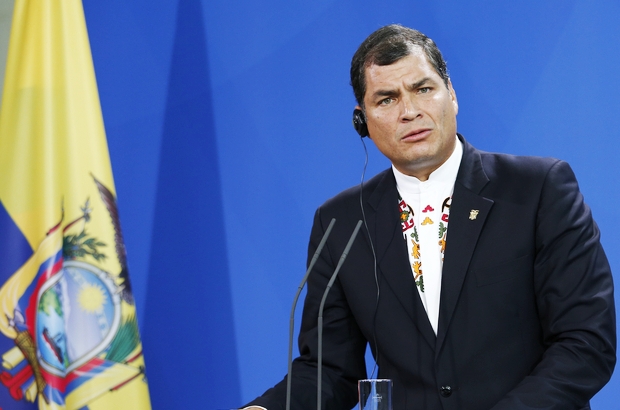
Ecuadorian president Rafael Correa (Image: Reynaldo C. Paganelli/Demotix)
President Rafael Correa’s new media law has “undercut press freedoms,” and “opens the door to censorship by giving the government or judges the power to decide if information is truthful”, according to a new report by the US State Department that ranked Ecuador as one of Latin America’s worst violators of press freedoms.
Unsurprisingly, the Correa administration hit back at the US. The Ecuadorian foreign minister, Ricardo Patiño, released a statement which claimed the report was “one sided” and came from, “a country that has a poor track record in observing human rights.”
The diplomatic tussle marked another stage in the deteriorating relationship between Quito and Washington, after Correa offered Julian Assange asylum in Ecuador in August 2012 — the Wikileaks founder still remains at the Ecuadorian embassy in London. However, the report has also highlighted the explicit crackdown on the media by Correa.
At the end of January, Correa’s government lashed out at El Universo newspaper for printing a cartoon which satirised the Boxing Day raid of opposition activist Fernando Villavicencio. Using Supercom, the media regulator established by last year’s communications law, El Universo was ordered to print a correction, and the paper was fined 2% of its average monthly sales. This recent incident marks a dangerous precedent for print media in Ecuador.
The communications law is a sweeping reform to the media landscape in Ecuador that in principle was designed to prohibit censorship, redistribute broadcast fairly and protect the rights of journalists. The reality is that the law is filled with loopholes which are open to manipulation, and allow for state interference — the creation of Supercom is a clear example of such problems.
Martin Pallares, a journalist at El Comercio, said the law, and its “subjective norms,” has led to, “tremendous self-censorship and a terrible fear among journalist.” According to Pallares, newspapers are constantly overshadowed by a fear that they will be forced out of business by a heavy fine for publishing an anti-government article. He also said the situation is more worrying because, “Correa controls the judicial system and if he wants he may order that any journalist can be prosecuted for libel.”
Reporters Without Borders has said some aspects of the communications law are positive, praising the “fairer distribution” of broadcast frequencies. But Camille Soulier, the head of Reporters Without Borders Americas desk warned the cartoon incident was the most “obvious case” of the dangers of the law which, “used in this way could foreshadow an increase in the disrespect for freedom of information.”
El Universo’s cartoon fine was not the only example of Correa intimidating partisan journalists. In September 2012, the magazine Vistazo was fined $80,000 for publishing an article which supposedly advocated a “no” vote against Correa. Then in February 2013, Ecuador’s highest held court upheld a libel conviction against El Universo that imposed a $40m fine and sentenced the three directors of the paper, and its leading columnist Emilio Palacio, to three years in jail each, for an article which accused Correa of human rights abuses. The men were later pardoned by the president, but the case still demonstrates the president’s ongoing bullying of the press.
The El Universo lawsuit had serious implications for Ecuador’s media according to the Committee to Protect Journalists’ (CPJ) Andes correspondent, John Otis. Otis said that after this lawsuit, Ecuadorian publishers and newspapers became more worried about publishing material, even if they knew that all their information is correct. “The El Universo case scares people”, Otis said, because of its potential financial implications.
Incidents such as this libel case have given rise to intense animosity from Ecuador’s media against the president. El Comercio’s Pallares has accused Correa of Orwellian control of the press. He said: “Correa does not tolerate diversity of opinions because of his deep seated religious background, and other traumas which makes him think he owns the truth. ‘You are a liar and we are the truth,’ he said to a journalist who asked him an uncomfortable question at a presentation at Columbia University some years ago.” While this depiction of Correa is evidently extreme, it is true that the president, now in his third term, set off to battle against the media from the outset.
Antoni Kapcia, a professor of Latin American History, at the University of Nottingham, views the relationship between Correa and Ecuador’s press in a more complex way however. Kapcia said that the press have been, “vehemently anti-Correa from the start,” and “they have not exactly been pursuing the lily-white truth in all these battles.” Kapcia believes that faults have been convicted on both sides of the war. “Correa is as much hitting out in retaliation as repressing the press, and in reality, he doesn’t control enough to really repress, even if he wanted to, so it’s more a case of kicking the press’s shins than really chaining it up.”
With the populist Correa, who has been in power since 2006, recently losing important local elections, the political future of Ecuador remains uncertain. One thing remains clear however, Correa’s crackdowns on Ecuador’s press are a serious threat to the democratic hopes of this Latin American nation.
This article was posted on March 7, 2014 at indexoncensorship.org
7 Mar 2014 | Awards, Honduras, News
Dina Meza is an investigative journalist working for the Committee of Relatives of the Detainees and Disappeared in Honduras, an incredibly difficult environment for press freedom.
Since the country’s 2009 coup d’état there have been a number of cases of the press being attacked and intimidated with impunity. Meza has dedicated her career to reporting on human rights stories shunned by the mainstream media, taking on the police, the security firms, and abusive employers in the process. The abduction and torture of her brother in 1989 by security forces was what initially sent her down this path — “It made me angry, the injustice. I knew then that I had to cover human rights abuses. I never had any choice!” she says.
Because of her work, Meza has been subjected to relentless threats – including threats of sexual violence – followed, watched, and had her communications intercepted. Her three children have also been threatened and followed. She briefly left Honduras to take up a fellowship at the University of York’s Centre for Applied Human Rights as part of their Protective Fellowship scheme. During this time, her children were forced to leave Tegucigalpa for a period due to a suspicious looking man keeping watch outside her younger son’s school.
After returning to Honduras in May 2013, Meza reports that she continues to be subject to harassment and surveillance. She reports having been followed on at least four occasions between May and August, and on 12 August Meza reported being the victim of a suspected attempt to abduct her.
This all happens with complete impunity, as despite her reporting the issues to the police, nothing is ever done. But the idea of giving it up is not an option for Meza: “I could not look into my children’s eyes and tell them I can do nothing about the situation, because to do nothing would be far worse than the threats, beatings or bullets of the police and the military”.
Nominees: Advocacy | Arts | Digital Activism | Journalism
Join us 20 March 2014 at the Barbican Centre for the Freedom of Expression Awards
This article was posted on March 7, 2014 at indexoncensorship.org
7 Mar 2014 | News, Religion and Culture, Ukraine, Young Writers / Artists Programme
As the Euromaidan protests gripped Ukraine, French street-artist Roti travelled to Kiev. He was eager to support protesters who were struggling with a violent police response to their government’s tilt toward Russia.
For months Roti had worked on an idea for a sculpture: A woman emerging out of water. The concept, which was originally meant for Paris, took on new meaning as the demonstrators in Kiev became set on revolution.
Roti cast his idea in marble and the sculpture, New Ukraine, became an allegory for Euromaidan protesters. The woman’s face, toes and hands protruded from the block of stone. As she struggled for freedom, she created ripples in the stone surrounding her – after all, discontent spreads.
On January 7, 2014, the artist illegally installed his work at the center of Kiev’s Independence Square. “It’s a gift. Not to a nation but to its people”, Roti declared. His intentions were clear. The work came as attacks on journalists and protesters became more and more regular. New Ukraine was a symbol of hope and progress at a time when resolve could have easily wavered.
The night of the installation, protesters celebrated by dancing and singing in the street. Confidence seemed momentarily rejuvenated. In the following weeks clashes between police and protesters would claim their first lives.
New Ukraine is not the only street-art to offer support to the Ukrainian people. Graffiti decorates Kiev’s main square – crossed out swastikas and the slogan “BIG BROTHER IS WATCHING YOU” have become common features.
During protest, street-art becomes a barometer of social consciousness. Scrawled words and images on city walls reflect changing attitudes and a disdain for the ruling authority. The stencils of President Yanukovych’s body, punctured with bullet holes, were a more extreme example.
Like the ripples of New Ukraine, street art spread ideas through Kiev and further afield. With Twitter and Reddit offering a more collective version of the news, artists’ efforts escaped the borders of Ukraine and communicated their message to the global community. They achieved impact through imagery and reached a more diverse audience than most newspapers.
It was on Reddit that I discovered a photograph of a police barricade. It had been painted with a cartoon depicting a Ukrainian flag holding hands with a European flag as Russia looks on, scowling. The message was simple but memorable.
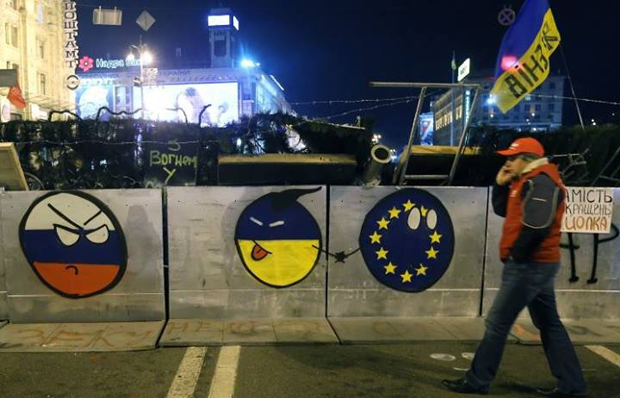
Protest posters also played an important role in boosting morale. Displayed around Kiev during the early days of the crisis, they highlighted the government’s inconsistencies and the power of the Ukrainian people. Of course, the country’s flag’s blue and yellow is the overriding color theme. Pairing graphic design with emotionally engaging political statements – “I am a drop in the ocean” – these works were incredibly empowering.
With a selection of these posters currently on display in Edmonton, Canada, it’s easy to see how imagery has the power to spread a political message. The exhibition features 50 designs which were posted around Ukraine. Each work was designed to encourage their audience to identify emotionally while keeping the message clear.
Artists use symbolism to monumentalise protesters’ efforts. With museums and galleries filled with artist’s renditions of historical events, we are programmed to link iconic moments with art. As creativity littered Kiev’s Independence Square, demonstrators were spurred on – the art around them transformed Euromaidan into a very stirring moment. Demonstrators were reminded: Here is the chance to make history.
Although they have since been annulled, anti-protest laws and restrictions on social media revealed the extent of how close Ukrainians came to losing the right to express themselves.
But on the streets, ideas would have continued to appear on walls and barricades. Street-artists cannot be tracked by algorithms. During times of crisis, they will always be on hand to support the people and spread their message.
This article was published on March 7, 2014 at indexoncensorship.org










